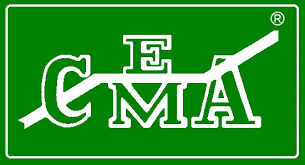
CEMA Divisions
CEMA has two sides divided by product types. The first, and largest, is the unit handling side. Unit handling conveyors handle finished goods whose quantities are measured in units. These conveyors move everything from boxes of pancake mix to automobile chassis on an assembly line. The unit handling side consists of manufacturers like Hytrol and Dorner. The other side of CEMA is the powder bulk material handling side. These conveyors handle material in bulk whose quantities are measured in pounds and cubic feet. These conveyors move materials like sand, grain and dry chemicals up to about 2″ in size. The powder bulk material handling side consists of manufacturers like Screw Conveyor Parts, LLC and Douglas Mfg. Unit handling and powder bulk material handling represent the manufacturing side of CEMA. CEMA also has technical members who are suppliers and engineering firms.
CEMA Meetings
CEMA has three meetings a year; one in the spring, one in the summer and the last one in the fall. The summer meeting is the engineering conference where the manufacturer’s engineers come together to discuss and update design and dimensional standards. The spring meeting is the annual meeting where the manufacturer’s owner representatives come together to discuss the business side of the industry and to set the direction for the organization and various committees. The fall meeting is a quick get together to wrap up the year and discuss the progress of the various projects. These meetings are well organized and the CEMA staff usually does a good job of keeping everything on schedule and productive.
CEMA Standards
CEMA’s work on dimensional and design standards has had a big influence on the industry over the last 80+ years. For example, the dimensional standards for screw conveyors have totally changed the industry. Because the parts are dimensionally standardized, the consumer can buy from any one of several manufacturers and distributors. In addition, when a part wears out on a screw conveyor replacement parts are easy to source. This allows the useful life of the screw conveyor to be extended and lowers the cost to operate over the machinery’s life. This is a big plus for the consumer and has a lot to do with why screw conveyors are so widely used throughout the market today. The only downside is for the manufacturer whose products are viewed as a commodity by the consumer and therefor low price is often the leading decision maker on who to buy from.
Overall, CEMA’s work in the industry is good for the consumer, the manufacturer and the North America economy by promoting safety, standardization and best practices for a wide variety of conveying equipment. For additional information, or to join, go to the CEMA website at www.CEMANET.org.

